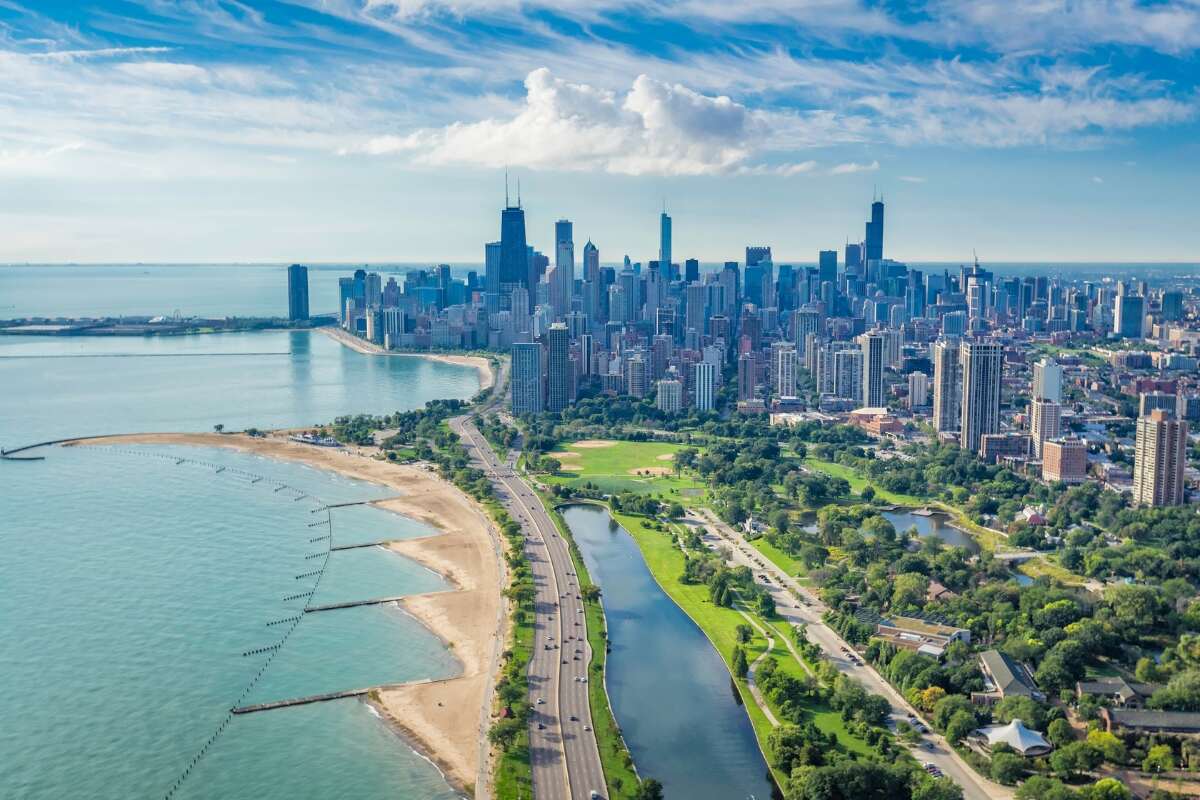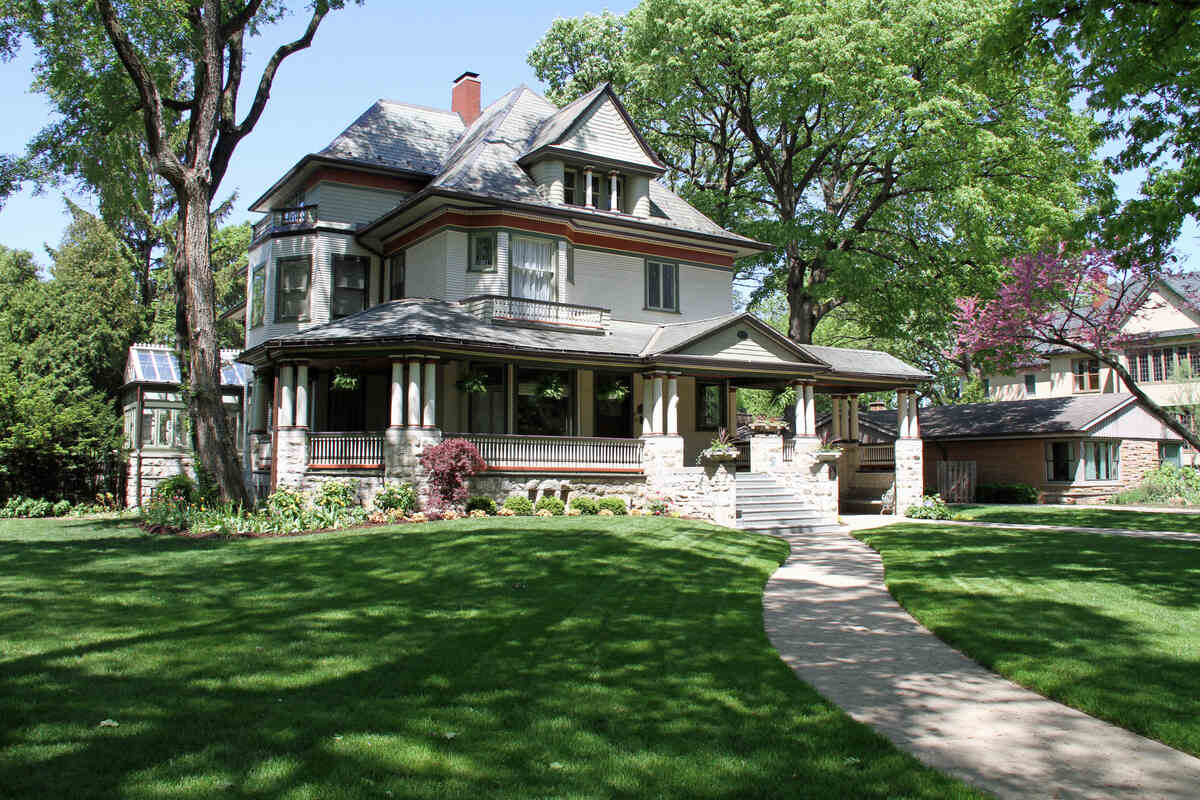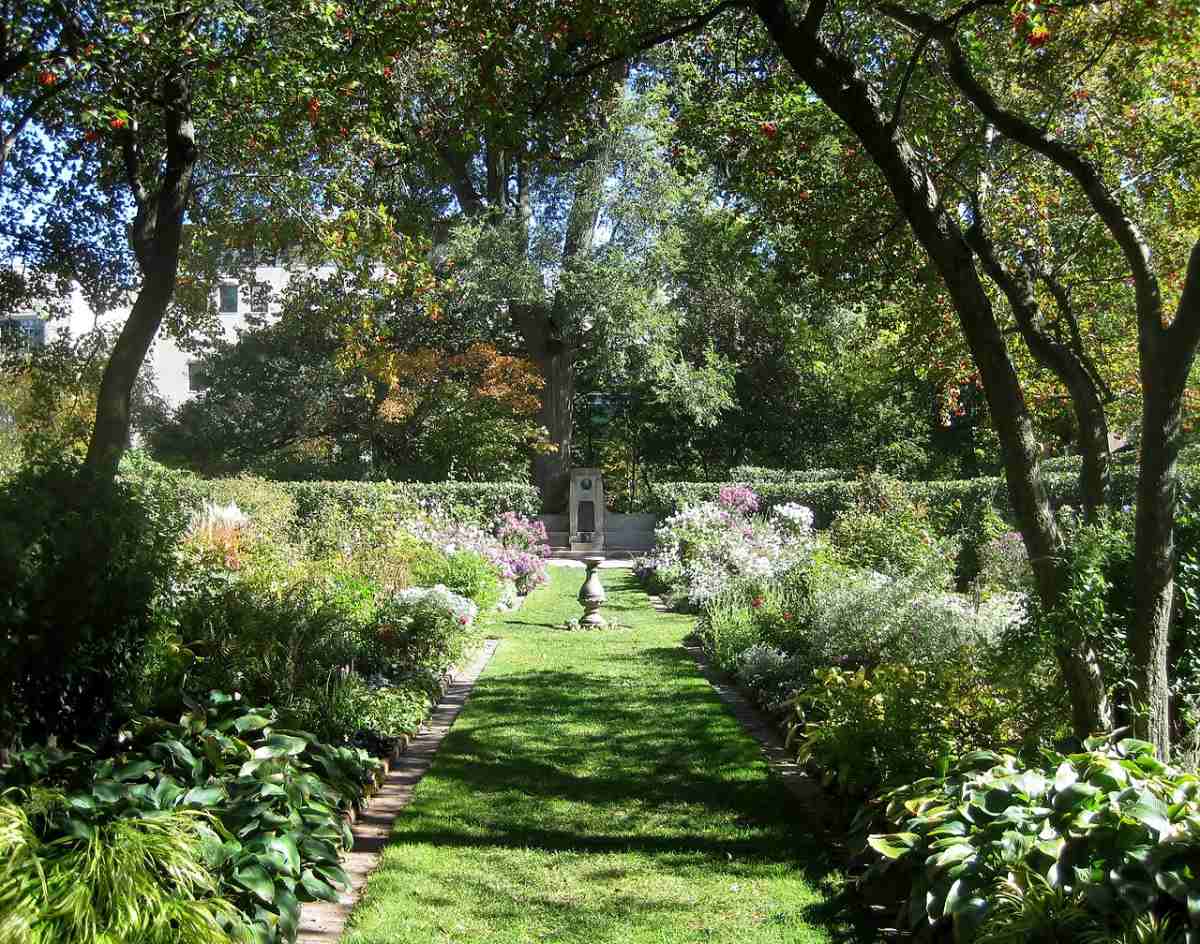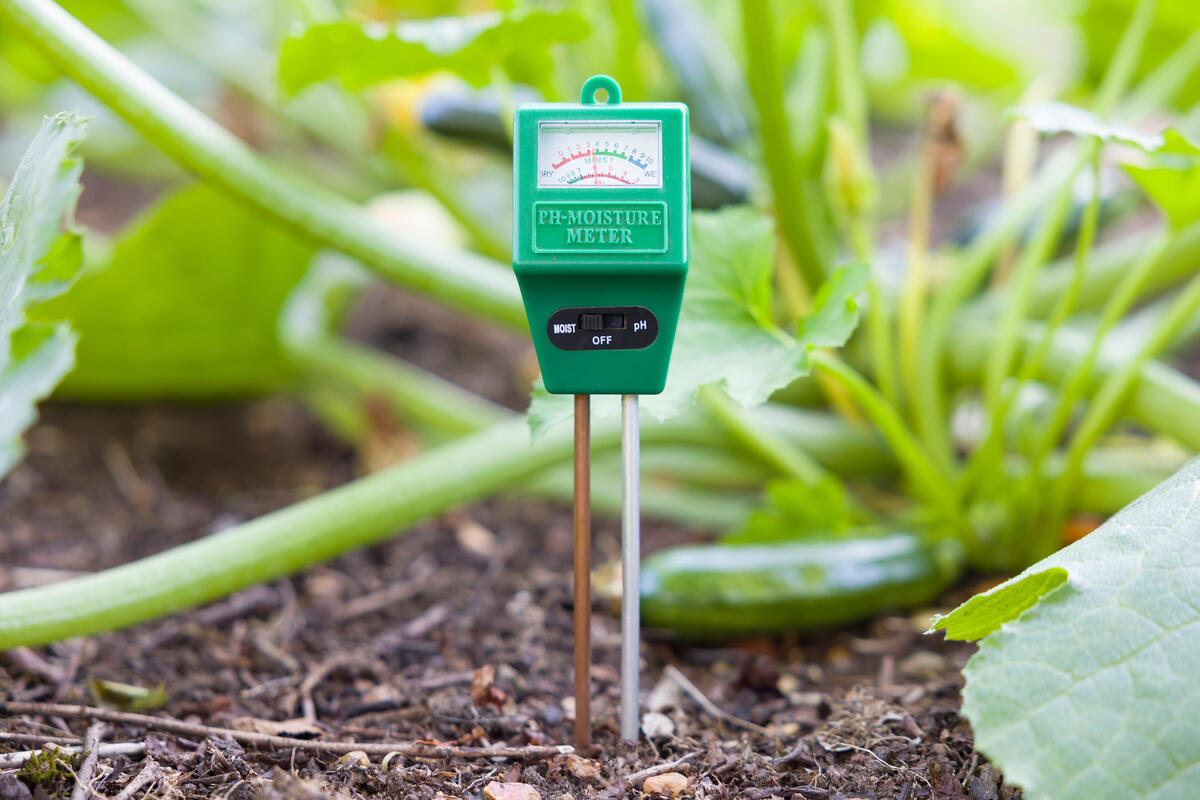
Illinois, known as the Land of Lincoln, is where the weather dances to its own tune, and your lawn has to keep up. From Chicago’s skyscrapers to the rolling hills of the south, maintaining a gorgeous, green lawn can be tricky, but it’s far from impossible. All you need is a game plan and a bit of know-how. So, let’s dive into this seasonal lawn care guide for Illinois.
Understanding Your Region’s Climate and Soil

Before diving deep into lawn care, it’s crucial to get a grip on your local climate and soil. Illinois is no stranger to wild weather, thanks to its size and geographical spot. It gets a chilly Arctic blast from the north and warm, humid air from the Gulf of Mexico in the south. So, you’ll find a mix of climates across the state.
In Northern Illinois (around Chicagoland, Rockford, and Galena), there’s a warm-summer humid continental climate, while down south (Belleville, Harrisburg, Marion, etc.), it’s more of a humid subtropical climate. This means the planting zones in Illinois vary, ranging from 5a to 7a. Most of the state, however, falls into zones 5a and 6b. To figure out your specific planting zone, take a look at the USDA’s Interactive Planting Zone Map.
This information will guide you on what and when to plant and the best time of year to perform certain lawn care tasks. The rule of thumb is to plant anything rated for your noted USDA Hardiness Zone. For example, if you’re looking for flowers that can survive the Illinois cold, your best bet is flowers native to Illinois that are rated for your hardiness zone.
Illinois Soil
Even though the weather can be a bit much at times, the soil in Illinois is actually pretty good. Most places around the state have a generous supply of loam or clay-loam soil, which is packed with organic matter – a big win for your lawn!
However, don’t rest on your laurels! It’s still crucial to test your soil annually to spot and tackle any potential issues. This can help you uncover any mineral deficiencies or potentially harmful contaminants. After all, a healthy lawn starts with healthy soil.
Spring Lawn Care Plan for Illinois

As any avid gardener knows, spring is the most crucial time for lawn care. After the long, cold winter months, it’s essential to give your Illinois lawn some TLC to help it hit the reset button.
In the Land of Lincoln, you can generally kiss the last frost goodbye around mid-April, which is when you should get started with spring lawn care tasks.
The temperatures can vary quite a bit. Up north, you’re looking at average highs hovering around 57° F, while down south, it can get as toasty as 67° F. And when the sun goes down, it can dip to a brisk 36° F in the north and mellow out around 48° F in the south.
So, depending on where you are in the state, you’ll want to begin prepping your lawn anywhere between mid-April and mid-May. If you anticipate a late frost, hold off on getting your lawn started for the season.
Timeframe: April – May
Average Temperatures: The general rule of thumb for your cool-season grass is to wait for air temps above 55° F and soil temps above 32° F before you start on spring lawn care.
Clean Up Your Lawn
Before you start to mow and fertilize, it’s essential to get rid of any debris that accumulated during the winter months. Dormant grass blades, leaves, branches – you name it, rake it all up. This will help the grass snap out of hibernation and ensure you get the most out of your spring lawn treatments.
Test Your Soil and Apply Soil Amendments (If Necessary)
No matter where you hang your hat in Illinois, it’s essential to test your soil once a year to spot any missing nutrients or nasty stuff that could mess up your lawn. The soil test results will tell you if you need to tweak the soil with soil amendments to adjust soil pH, texture, and nutrient makeup.
If the pH is outside of the ideal range of 6 to 7, you’ll need to fix it. Sulfur will lower the pH, while lime will lift it. Just remember, sulfur likes to be applied in spring, while lime can be applied in either spring or fall. But don’t hold your breath – it takes a while for pH changes to set in. Test the soil again about three months after adding amendments to monitor the results.
Start Mowing Your Lawn
Once you’ve raked up all the debris, it’s time to whip out the mower for your lawn’s first cut of the season. But not before you sharpen the blades! Dull blades can create unsightly brown patches, as they tear the grass instead of cutting it. We recommend sharpening lawn mower blades once at the beginning of every spring, at the very least.
Pro mowing tips:
- While leaving grass clippings on the lawn is usually a top-notch organic fertilizer, it’s a good idea to bag them up at the start of spring. Why, you ask? All that winter wetness can lead to nasty lawn diseases. Wait until you’ve mowed a few times and the temperatures become more moderate to mulch your grass clippings.
- Don’t mow more than one-third of the grass’s height in any one cutting. For example, if your lawn is currently 3 inches tall, you shouldn’t cut it lower than 2 inches in your next mowing session.
- Mow your lawn weekly to keep it at the recommended height for your grass type without breaking the ⅓-rule mentioned above.
- Try to avoid mowing when the grass is wet. Wet grass can clog the lawn mower and create an uneven cut.
Here is a breakdown of the optimum mowing heights for the best grass types for Illinois lawns:
| Grass type | Ideal lawn height (inches) |
| Kentucky Bluegrass | 2.5 – 3.5 |
| Fine Fescue | 2.5 – 4 |
| Tall Fescue | 2 – 3 |
| Perennial Ryegrass | 1.5 – 2.5 |
| Rough Bluegrass | 1.5 – 2.5 |
| Zoysiagrass | 1.5 – 2 |
Irrigating Your Lawn
It’s no secret that water is the key to a thriving lawn. Ideally, you should give your lawn about 1.5 inches of water per week, including rainfall. This can be challenging because it’s hard to measure how much water your sprinklers are giving out and how much rain your grass is getting, so it’s a great idea to use a soil moisture meter or rain sensor (which automatically shuts off your sprinklers when it’s raining).
You should also water your lawn deeply once a week instead of a few times with little water throughout the week to ensure that the water will reach the roots.
When in doubt, look to your grass for guidance. Your lawn will tell you when it needs water. Look out for any wilting, color changes, or lingering footprints. These are signs that it’s time to douse your lawn with H2O!
Pro lawn watering tips:
- Water your lawn in the early morning (before 10 a.m.) to minimize evaporation loss and disease risk.
- Avoid frequent waterings, as they encourage shallow roots and weeds.
- Use mulch to prevent evaporation and help the soil retain moisture.
- Spread the water evenly across the lawn.
- Consider investing in an irrigation system – these can save you time and ensure your lawn is watered evenly.
Dethatching and Core Aeration
After a hard Illinois winter, chances are your topsoil has become quite thick with lawn thatch – aka the layer of dead grass, roots, and stem bits that builds up between the soil and grass blades. This layer can be problematic, as it blocks the roots from accessing sunlight and air, leading to a weak root system.
Dethatching the lawn will remove the excess thatch, while core aeration will create channels in the soil, allowing roots to grow deeper into the ground and access groundwater. Core aeration pulls up small plugs of soil, which will help break up any remaining clumps of thatch. Air, water, and nutrients can then be absorbed into the ground much easier.
Pro tip: Aerating your lawn is a must, and once a year is the golden rule, with fall being the ideal time for Illinois’s cool-season grasses. However, pay attention to your soil’s condition. If it’s all tight and compacted after winter, spring aeration is totally on the table. Anytime from April to mid-May is perfect.
Feeding Your Lawn
Once you’ve got your yard all spruced up, it’s time to prep your turf for the sunny days ahead with a spring application of fertilizer. But don’t just throw any old fertilizer on it! It’s important to know what kind of grass you’re dealing with. There are two main options:
First, we have the cool-season grasses, which are, by far, the biggest crowd-pleasers across Illinois. Then, there are the warm-season grasses, which are primarily found in the south, with Zoysiagrass being a fan favorite.
For the cool-season grasses, such as Kentucky bluegrass and tall fescue, the general rule is to feed them about 2 to 4 pounds of nitrogen for every 1,000 square feet over the course of the season. Each feeding should be about 1 pound of nitrogen for every 1,000 square feet.
It’s a good idea to divide the feedings into two or three separate applications. Aim for early May and early September, and if you want to add a third feeding, late October or early November is a good time.
On the other hand, warm-season grasses have different needs. You’ll want to feed these types of grass twice during the spring. The best times are late March and early May.
Pro spring fertilization tips:
- If you don’t have enough time to fertilize more than once a season, then skip out on the spring applications and wait until late summer or early fall. Cool-season grasses, especially, benefit from fall fertilization.
- Don’t rush it – wait until your lawn naturally greens up before you apply a slow-release fertilizer in spring.
- Opt for a slow-release fertilizer – the granular type is a top pick. It gradually lets out the nutrients, dodging the risk of over-fertilizing.
Weed Control
No matter how much TLC you give your lawn, there’s a chance pesky weeds might still pop up. To nip this problem in the bud, apply pre-emergent weed control in mid- to late March. This will impede germinating weed seeds before they become an issue.
If you didn’t manage to get your pre-emergence weed control down, don’t worry. You can still use a post-emergent broadleaf weed killer to remove any existing weeds.
Common weeds to watch out for in Illinois include:
- Dandelions
- Plantain weeds
- Crabgrass
Mechanical weed control is a great option, too. That means removing weeds manually by hand, with a garden hoe, or with a weed eater. If your lawn is properly taken care of, you’ll have fewer weed problems in the first place. Maintaining healthy grass is the best way to prevent and kill weeds.
Summer Lawn Care Plan for Illinois

The general care you applied in the spring will carry your lawn on its merry way into the summer months. But as the temperatures rise, different tasks come into play.
Timeframe: Early June to early September
Average Temperatures: During the peak of summer, high temps will hover around 80° F in Northern Illinois and 89° F in Southern Illinois.
Pest Control: Watch Out for Grubs and Other Pests
Summer in Illinois means a constant battle against lawn pests, especially lawn grubs, aka white grubs. These critters are most active in late summer and early fall, munching away at your turf roots. You know you’ve got a problem when you start to see:
- Brown patches on your lawn
- Loose turf that can be easily pulled out of the ground
- An increase in skunk, raccoon, or bird activity as they hunt for grubs
Dealing with grubs ain’t no walk in the park. Regular monitoring is critical, and you’ve got to stay on top of things like mowing and watering.
If you let things slide, you’re just asking for trouble. And if you find yourself in a real pickle with a severe infestation, it might be time to call in the professionals. They can apply insecticides like chlorantraniliprole, trichlorfon, or imidacloprid to stop the grubs in their tracks and prevent further damage.
Lastly, remember it’s not just grubs you need to worry about. Other pests like sod webworms can also wreak havoc on your lawn in summer.
Pro lawn pest control tips:
- Early July is usually when chemical treatments are most needed, so mark your calendar!
- A well-maintained lawn is your best defense against any pest.
Mow Less Often
During hot, dry months, cool-season grasses may begin to go dormant, and as a result, their growth rate slows down. This means you don’t need to mow as frequently. Wait until the grass reaches around 3 inches in length before mowing to give your turf a fighting chance to survive the heat.
Pro summer mowing tips:
- Avoid mowing in the afternoon, as this is when heat and sunlight can really put a strain on your grass.
- Use clippings to fertilize your lawn. Clippings are an excellent, natural source of nitrogen, a vital lawn nutrient. They also help keep the soil cool and moist.
Water Smart
Keeping your lawn hydrated is one of the best ways to maintain a healthy lawn during the dry summer months. Aim to irrigate approximately one inch of water per week — deep but infrequent watering is vital — to help your turf store moisture and resist drought.
Watering too often can actually do more harm than good, as this can promote shallow roots and fungal diseases.
Pro summer watering tips:
- Avoid overwatering your lawn even during times of drought — too much H2O can lead to disease.
- Time your waterings for early morning rather than in the afternoon.
- If your cool-season grass is brown and dormant due to drought, remember that it’s alive and will green up again when rain comes.
- If you live in an area prone to drought, look up your local water restrictions, as certain cities may limit watering. For instance, Chicago and the city of Park Ridge have their own rules about when and how much you can water your lawn in the summer.
Weed Control
Keep your eyes peeled for pesky summer weeds like crabgrass, goosegrass, and dandelions. Pull or hand-dig these weeds when you spot them.
Pro summer weed control tips:
- Target your weed treatments to the soil line for better results.
- Read up on herbicides to ensure you’re choosing safe and effective products. Typically, late August to early September is the optimal time for applying post-emergent herbicides.
Fall Lawn Care Plan for Illinois

In Illinois, the fall season is the perfect opportunity for lawn care activities such as overseeding and fertilizing. As the temperatures cool down, the grass begins to grow again, making it an opportune time for homeowners to set their lawns on a path to success.
Moreover, as the chilly winds roll in, it’s time to buckle down and gear up for the frosty days ahead.
Timeframe: Early September to early November
Average Temperatures: Northern Illinois averages highs of 60° F with lows of 40° F, while Southern Illinois will hit highs of 70° F with lows around 48° F.
Fall Fertilizer
Cool-season grasses thrive in spring and fall, bouncing back from summer stress. Fall fertilization boosts nutrient levels and preps the roots for winter.
Fall Fertilizer Applications – Essential Considerations:
A granular fertilizer with a ratio of 4-1-2 or 3-1-2 of nitrogen, phosphorus, and potassium is recommended. Nitrogen will promote leaf growth and give your lawn that lush, green color. Phosphorus is essential for root development, and potassium helps the grass to resist diseases and tolerate drought.
The first application should be in early September to help the grass recover from the summer and kickstart fall growth. Apply the fertilizer using a broadcast spreader for even coverage.
As the days grow shorter and Halloween decorations start popping up, consider a second act. This would be late October or even early November. For this curtain call, a fast-release, high-nitrogen fertilizer steals the show. Think of it as a shot of espresso for your lawn, helping it wake up faster and stronger in the spring.
Pro fall fertilization tips:
- Watering your lawn after fertilization is crucial. It helps to move the fertilizer into the soil and ensures that the roots absorb the nutrients.
- Roughly, you’ll need about a pound of nitrogen for every 1,000 square feet of lawn for each application.
Increase Mowing Frequency
As the temperatures cool, your cool-season lawn will start to grow again, and with new growth comes the need to mow more often. You can cut your lawn between 2 and 3 inches for optimal growing conditions. Continue to mow until the lawn stops growing, which is usually around November.
While cool-season grasses will stop being active once the air temperature falls below 50° F, warm-season grasses will cease at 60° F.
Overseeding
Fall may be the last hurrah for your lawn, but that doesn’t mean you should skimp on seeding. Overseeding your lawn around mid-August to mid-September will help prevent weeds from taking over, as well as densify your turf and give it a deep, rich color. Plus, it will help strengthen your lawn’s root system so it makes it through the cold winter months.
First, consider your lawn’s grass type. For example, tall fescue works great as an overseeding mix for Kentucky bluegrass.
Before doing anything else, you’ll need to remove debris or soil clumps. Roll out the spreader loaded with the seed and broadcast it evenly. Once you’re done, lightly water the lawn.
Aerating
In the fall, soil compaction tends to be at its peak, making it harder for your grass to access sunlight and air. Thankfully, core aeration will come to the rescue, undoing all the clumping and compaction while encouraging deeper roots and better water absorption.
Though we also listed aeration as a spring lawn care task, it only needs to be done once per year. Fall is the best time to aerate cool-season grasses, provided that the soil isn’t super compacted in spring, demanding earlier aeration.
Pro lawn aeration tips:
- Aim for two weeks before fertilizing and overseeding, as this will help keep the plugs from clumping up when exposed to water. Don’t worry about over-aerating – the more, the merrier.
- Aerate your lawn from mid-August to early October to allow the grass to recover before winter dormancy.
Weed Control
Weeds are still in full swing, so stay vigilant for any suspicious visitors. It isn’t too late if you missed your chance in spring or summer. Use post-emergent weed killers, like selective herbicides, to keep any weeds in check.
Winterize Your Lawn
Winterizing your lawn means getting it ready for the cold winter months. In an ideal world, lawns should enter winter in the most healthy condition possible. Early winter prep will help you avoid the extra maintenance needed in the spring. If you follow the steps above, you’ll put your turf in the best state possible for when the snow thaws.
Here is a quick recap of winterizing your lawn:
- Step 1: Clean up debris
- Step 2: Mow your lawn at a height of 2-3 inches
- Step 3: Aerating your entire lawn
- Step 4: Apply a winter fertilizer
- Step 5: Mulch the lawn, if necessary (organic mulch such as compost works well)
Winter Lawn Care Plan for Illinois

Unfortunately for lawn nuts in Illinois, the freezing winter doesn’t offer much action in terms of lawn care. The frigid temperatures and frosty winds are too much for your grass to handle. So, it’s time to take it easy, sit back, and whip up some hot cocoa.
During the chilly season, there are only a few recommendations to consider, including:
- Clear heavy snow from walkways, avoiding salt, as it can damage the lawn and plants. Use sand instead. When you clear snow, don’t pile it up on your grass.
- Limit walking on the lawn to avoid damaging the fragile, frosty, or dormant grass.
- Use this downtime to clean, sharpen, and maintain lawn care tools for the spring season.
- Plan the next gardening season by browsing seed catalogs, planning the garden layout, and starting seedlings indoors if possible.
- Stay warm and enjoy the break, knowing that spring is just around the corner and your lawn will soon return to its green and glorious state.
FAQ About Lawn Care in Illinois
To fix brown spots in your lawn, you’ve got to figure out what’s causing them and then treat the cause of lawn brown spots. It could be bugs, over-fertilizing, or even your dog marking his territory. Then, get rid of the dead grass and reseed the area. The best grass seeds for Illinois include Kentucky bluegrass, fine fescue, tall fescue, and perennial ryegrass.
Mowing frequency for Illinois lawns depends on the season, but generally, you should aim to mow every seven to ten days. Depending on the type of grass, you will want to keep the mower blade set at 2 ½ to 3 inches during the active growing season.
It is generally recommended to stop mowing your lawn in Illinois around November when the cooler temperatures start and the lawn is no longer actively growing. Cool-season grasses will usually stop growing once the air temperatures drop below 50° F, while warm-season grasses will cease at 60° F.
In Illinois, it’s ideal to overseed your lawn from late August to mid-September, when the soil is warm and there’s less weed competition. If you miss that window, try in April or May, but be sure to allow the new grass time to be established before summer.
In Illinois, the best time to fertilize your lawn is in the spring and fall, as follows:
● Early spring (April to early May): As the grass starts to green and grow
● Early fall (early September): To help recover from summer and prep for winter
● Late fall (early November): To strengthen the grass for winter
Choose the right fertilizer for your grass and soil, and avoid over-fertilizing!
Final Thoughts
The weather in Illinois is nothing if not unpredictable, and your lawn definitely takes the brunt of it. Regular upkeep is your best bet for a lush, healthy lawn. From mowing to fertilizing, every little bit counts. It’s all about finding a routine that works for you and sticking to it.
If you run into problems, don’t sweat it! Whether you’re in the Chicago metro area or rural Illinois, LawnStarter is here to connect you with local lawn care pros who can help get your lawn back on track.
Main Photo Credit: marchello74 / Canva Pro / License




